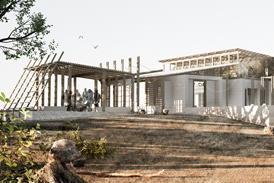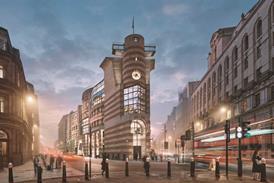- Home
- Intelligence for Architects
- Subscribe
- Jobs
- Events

2025 events calendar Explore now 
Keep up to date
Find out more
- Programmes
- CPD
- More from navigation items
An Atlas of Es Devlin: ‘The impact of her work can last a lifetime’

If you find yourself in New York between now and 11 August, be sure to visit this show, mapping the career of artist and set designer Es Devlin, writes Nick Hornig
London-based Es Devlin first studied English at the University of Bristol, before a foundation in fine art at St Martin’s led her to set design at the Motley Theatre Design Course (now the Genesis Theatre Design Programme). She rose to prominence in the UK designing productions at the Bush Theatre, and the National Theatre. But it was through her witty designs for the closing ceremony for the London 2012 Olympics that many of us first encountered her work on a global stage.
Fast forward 12 years and Devlin’s client list is extraordinary. Amongst others, she’s worked with Adele, Jennifer Lopez, Nitin Sawney, Lorde, Miley Cyrus, Pet Shop Boys, Take That, U2, and The Weeknd. She designed the UK Pavilion at the 2020 World Expo in Dubai (the first pavilion designed by a woman since the expo’s inception in 1851); a miniature version of Compton for the 2022 Superbowl half time show; a set for Bizet’s Carmen, with giant hands rising up out of Lake Constance at Bregenz in Austria; as well as an interactive poetry-generating lion in Trafalgar Square, part of the 2018 London Design Festival.
…
This content is available to registered users | Already registered?Login here
You are not currently logged in.
To continue reading this story, sign up for free guest access
Existing Subscriber? LOGIN
REGISTER for free access on selected stories and sign up for email alerts. You get:
- Up to the minute architecture news from around the UK
- Breaking, daily and weekly e-newsletters
Subscribe to Building Design and you will benefit from:

- Unlimited news
- Reviews of the latest buildings from all corners of the world
- Technical studies
- Full access to all our online archives
- PLUS you will receive a digital copy of WA100 worth over £45
Subscribe now for unlimited access.






